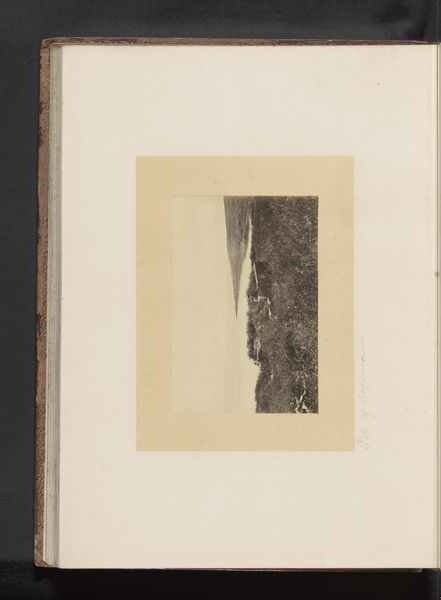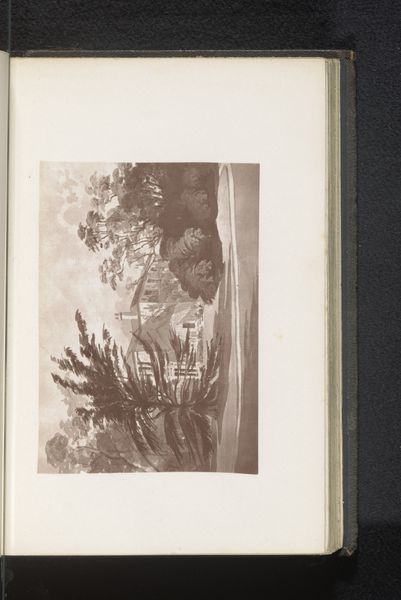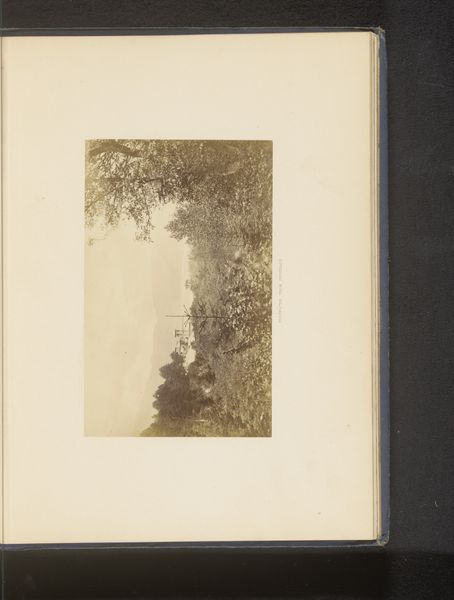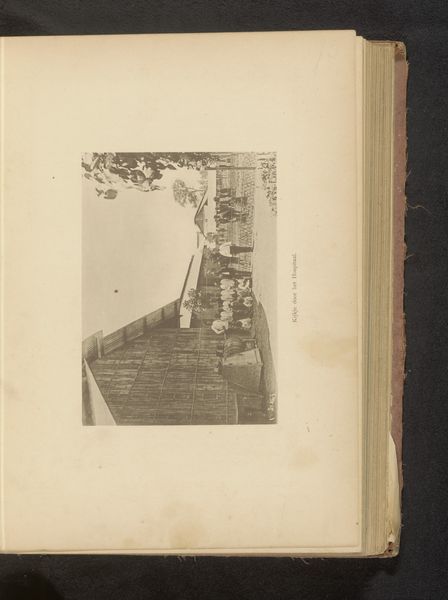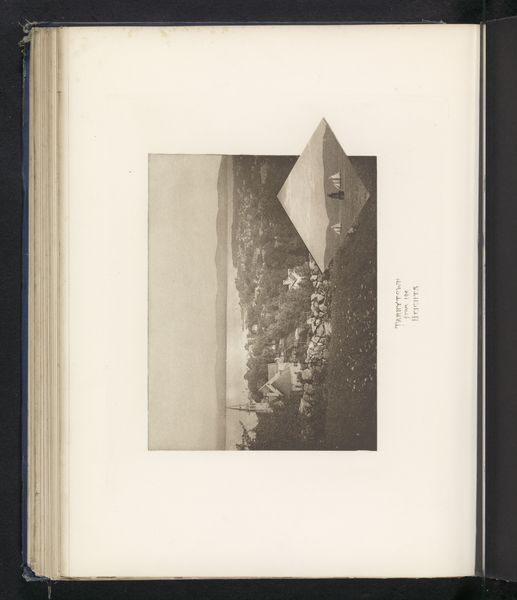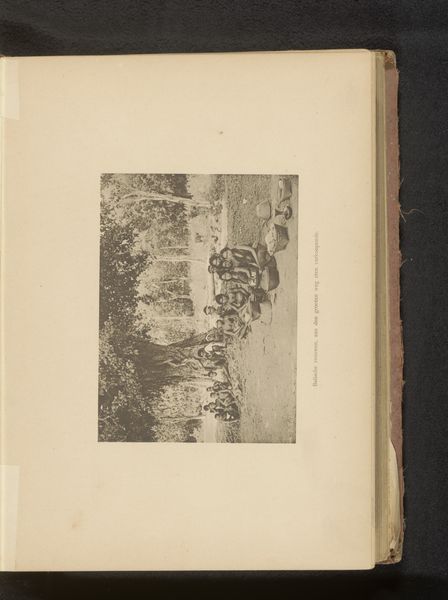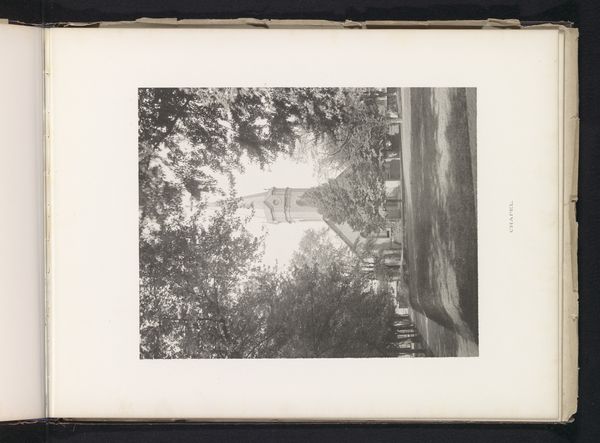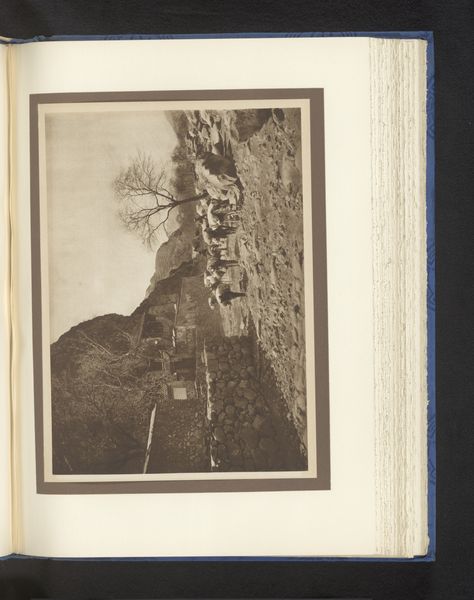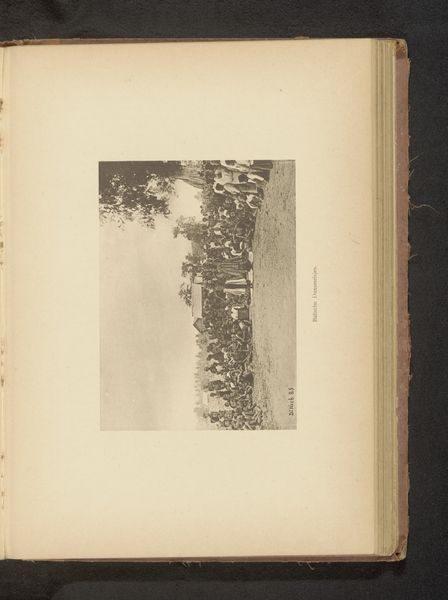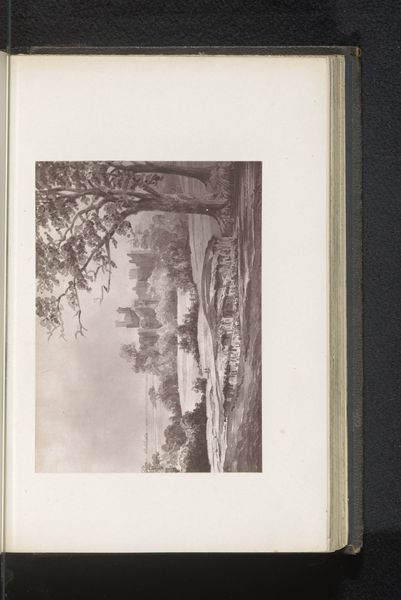
photography, albumen-print
#
landscape
#
river
#
paper texture
#
photography
#
orientalism
#
paper medium
#
albumen-print
Dimensions: height 124 mm, width 289 mm
Copyright: Rijks Museum: Open Domain
Curator: Donald Mennie created this photograph, “Brug bij het Zomerpaleis te Peking” before 1920, using the albumen print method. Editor: It strikes me as a remarkably still scene. The bridge's arches are almost perfectly reflected in the water below. There’s a quiet symmetry, even with the foliage obscuring parts of the architecture. Curator: Mennie's work often explores the landscapes of East Asia, touching upon the prevalent orientalist lens of the time. He captured the Imperial Summer Palace, which had already endured destruction in 1860. This image may reflect a nostalgic gaze back at dynastic China amidst its declining imperial power. Editor: You're right, knowing that historical context really deepens the impact. From a formal perspective, the composition itself uses the strong vertical lines of the bridge to guide the viewer’s eye, while the horizontal plane of the water provides balance. The limited tonal range enhances the ethereal quality, giving a sense of fading grandeur. Curator: Considering that the Summer Palace and places like it were often showcases of imperial power reinforced through forced labor and wealth extracted from various communities, how do we negotiate Mennie's aesthetic rendering of such a site? Whose perspective truly benefits from this seemingly serene image? Editor: It’s true—the romantic portrayal of a place conceals complicated socio-political histories. As viewers, our awareness is critical, as is questioning how aesthetics and technique contribute to an overall message, regardless of intent. Curator: Perhaps reflecting upon Mennie's personal context is pertinent too. As a Scottish expatriate and amateur photographer, what narratives was he hoping to construct with these views of a place, necessarily, on the verge of modernization and colonial interventions? Editor: Right. By dissecting the photographer's viewpoint along with the historical events, we open this simple photo to many layered meanings. It definitely complicates my initial formal assessment, too. Curator: For me, analyzing photographs like these provides avenues for contemplating not only the physical place itself, but also the socio-cultural context that impacted both the subject and its artistic representation. Editor: Indeed. It forces a crucial reflection on what a photographer captures, and also on what remains out of the frame, inviting further inquiry and a much deeper conversation about historical representation.
Comments
No comments
Be the first to comment and join the conversation on the ultimate creative platform.

